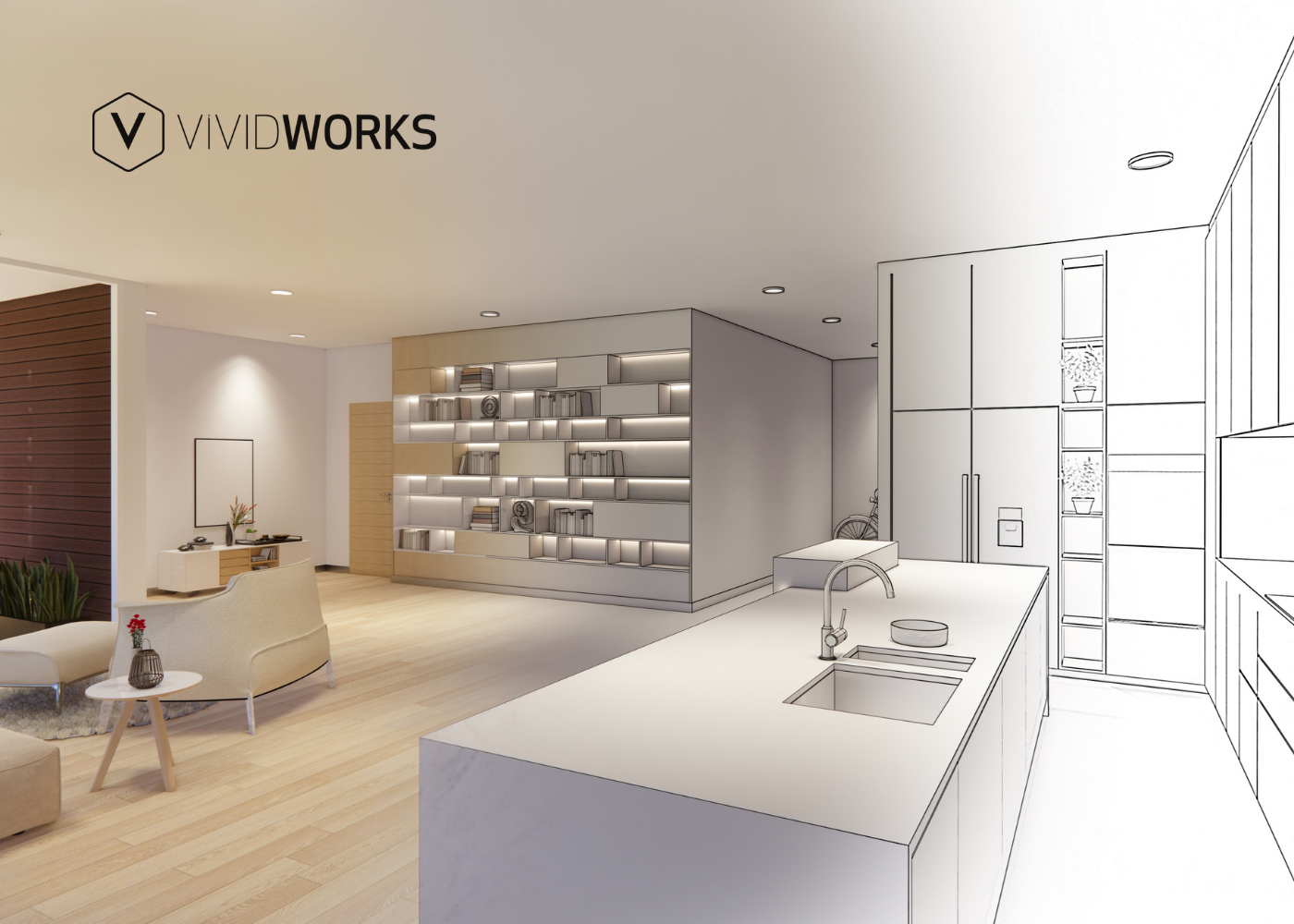The future of digital transformation is reshaping how the furniture industry manufactures and sells. With the rising demands for personalization and immersive experiences, where modern consumers want to customize and visualize furniture directly in their homes, businesses are turning to AI, AR, Visual CPQ, 3D, and configuration to stay competitive. The article today also defines the next generation of digital transformation in furniture.
Key takeaways:
- Definition of digital transformation
- Benefits of digital transformation in the furniture industry
- Expect growth in AI, AR, Visual CPQ, mass customization, configuration, and more.
- Furniture brands are embracing innovative tools to boost sales and engagement.
An Overview Of Digital Transformation
What Is Digital Transformation?
Digital transformation is the integration of digital technologies across all areas of a business, reshaping how companies operate, deliver value, and connect with customers. As the nature of each organization is unique, the implementation of business digital transformation is not the same. For example, it can start with a single-focused project using simple tools or as a comprehensive enterprise initiative for complex infrastructure.
But, most importantly, companies should use proper digital solutions, have an effective digital transformation strategy, and monitor improvements through KPIs. Without strict management, you may waste a significant amount of money, time, and human resources.
When It Started And How It Is Going in Business Transformation
The earliest examples of transformation are companies like Uber, Airbnb, and Netflix, which utilized mobile and cloud computing to reinvent how industries operate. The Covid-19 pandemic accelerated this shift, forcing organizations to adopt digital tools that supported remote exchange, supply chain visibility, and online shopping convenience. Since then, the focus has evolved from simple automation to data-driven ecosystems.
Today, the future of digital transformation is driven by intelligence, innovation, and integration. Brands are connecting design, production, and marketing with unified digital platforms like online product configurators for eCommerce, creating faster workflows, personalized experiences, and smarter decision-making. Those leading this evolution are not just keeping up with change; they’re shaping how industries will grow in the future.
How The Furniture Industry Has Embraced Digital Transformation
The furniture industry is rapidly evolving as brands realize the vast benefits of digital transformation. By adopting new technologies and data-driven tools, companies are reimagining how products are designed, sold, and experienced. Below are the key points:
- Enhanced customer experience and premium engagement
Brands now offer immersive 3D visualization, augmented reality (AR), and 3D product configuration by using tailored tools for digital transformation in retail and eCommerce. This allows customers to freely design, explore, and project custom furniture in their own space before purchase, which can increase their engagement, satisfaction, and loyalty.
- Increased conversion and reduced returns
Accurate digital previews in 3D build buyer confidence and minimize uncertainty. This enables buyers to make informed choices, resulting in higher purchase rates and fewer returns. AI-powered suggestions also recommend complementary items, boosting AOV.
- Cross-team collaboration
Most furniture businesses opt to implement digital transformation platforms because they facilitate seamless coordination among design, sales, and manufacturing teams. This is especially crucial for strengthening communication and minimizing manual errors. Furthermore, automation and connected systems are great for enhancing sustainability.
- Drive data-based insights for informed decisions
Advanced analytics tools or online product configurators provide real-time visibility into consumer behavior, preferences, and purchase trends. These insights help make smarter, data-driven decisions regarding product design, pricing, and inventory management.
5 Key Trends Driving The Future of Digital Transformation
Trend #1. Movement from B2B to B2B2C (Hybrid models)
What’s happening
The first trend shaping the future of digital transformation in the furniture industry is the transition of businesses from traditional B2B to B2B2C. Manufacturers can directly connect with end customers through digital channels without resellers or wholesalers.
Why it matters
This hybrid model bridges the gap between retailers, resellers, and buyers, allowing brands to have stricter control over the shopping experience, pricing, and customization.
How the furniture industry transforms:
- Launching direct-to-consumer (D2C) websites alongside dealer networks
- Using digital transformation platforms to unify B2B and B2C operations
- Empowering buyers with 3D product customization tools for direct engagement.
Trend #2. Mass customization and product configuration at scale
What’s happening
Traditional one-off customization offers a high level of personalization but often requires a lot of time and resources. Mass customization, on the other hand, enables the creation of custom furniture with the speed and efficiency of mass production. This reflects a growing and potential trend in digital transformation in manufacturing, where software and automation make large-scale personalization both practical and profitable.VividWorks: 3D Meeting Pod Configurator_Demo
Notably, the role of 3D furniture configurators is highlighted due to their ability to offer immersive 360-degree experiences. Customers can customize their own furniture and explore it from all angles to gain a deeper understanding of the final design. You can no longer rely on 2D visuals/ static images; instead, you can evaluate items more effectively.
Why it matters
While buyers want to design furniture that matches their exact preferences in material, color, dimensions, and more, sellers want to find a method to optimize the sales cycle. And offering mass customization and configuration options can address both demands.
How the furniture industry transforms
- Implementing furniture configurators that let customers visualize designs in 3D
- Integrating product customizers and configurators with eCommerce platforms like Shopify or Magento, ERPs, and CRMs to automate the manufacturing process
- Embedding rule-based configuration for a high level of compatibility
- Combine with AR/VR technology to offer true-to-life feelings
- Working with reliable product configuration providers to ensure the best results.
Trend #3. Immersive 3D/AR Previews
What’s happening
AR for furniture and 3D visualizations have become defining trends in the future of digital transformation. Many buyers hesitate to invest in costly furniture as they can’t physically see it beforehand. These immersive technologies can bridge this gap by allowing customers to fully discover designs and visualize how items fit within their actual spaces.
Why it matters
By enabling realistic previews, these tools reduce uncertainty and enhance engagement, as customers spend more time interacting with 3D previews and AR-powered spaces. From that, you can create stronger emotional connections between brands and buyers.
How the furniture industry transforms
- Offering 360-degree product views and room simulations
- Leveraging 3D configurators with built-in AR to maximize experiences
- Enabling AR experiences by simply scanning the QR code with tablets or phones.
Trend #4. Visual Configuration (Visual CPQ)
What’s happening
Many shoppers already use Visual CPQ, which is one of the technology trends embedded into 3D configurators. This technology allows users, including customers and sales teams, to configure items and view their prices and quotes in real-time. Compared to traditional CPQ systems, Visual CPQ can take your online shopping journey to the next level with interactive interfaces.
VividWorks: Shopify Storage Configurator for Workshop Storage (former ELLTEK)
Why it matters
Visual CPQ furniture replaces the manual design process, reduces manual errors, and ensures that what your customers are ordering is exactly what you see and what will be produced by furniture manufacturers.
How the furniture industry transforms
- Simplifying custom product sales for furniture for both B2B and B2C clients
- Integrating configurators with Visual CPQ or Visual CPQ software on your store
- Including predetermined rules and constraints to ensure valid designs.
Trend #5. Artificial Intelligence (AI) and Predictive Analytics
What’s happening
AI is driving digital transformation and marketing strategies across various industries, and the furniture sector is no exception. Machine learning and predictive analytics are also potential digital technologies, helping optimize everything, from forecasting to product recommendations based on customer behaviors and history.
Why it matters
By leveraging data-driven insights, a digital business can move beyond assumptions to achieve more effective change management. Rather than relying on guesswork, it can anticipate customer needs, personalize experiences, and continuously refine its marketing strategies.
How the furniture industry transforms
- Using AI for predictive analytics in design and supply chain planning
- Personalizing recommendations with AI-powered automation tools
- Automating lead management to boost furniture leads through data analysis.
3 Real-World Case Studies to Get Inspired
1. New Works Simplifies Complex Shelf Sales with 3D Configurators
- Related trends: B2B2C & 3D product configuration & Visual CPQ & AR
New Works, a high-quality Danish design house, needed to simplify the complex process of selling its highly configurable, bespoke shelves to clients, designers, and architects. That’s why the company decided to partner with VividWorks to create a 3D shelving system configurator that would make it easy for every user, from clients to architects, to configure and visualize custom furniture without spending hours on manual drawings.

Customers can preview their shelves in 3D and real-world environments through AR. Visual CPQ allows them to see accurate results for displays, prices, and quotes instantly. Thus, on the very first day the VividWorks configurator went live, the company received an $8,000 order and saw a significant improvement by reducing manual work by 80%. This also indicates how relevant trends are redefining the future of digital transformation.
2. Wayfair Enables “Muse” - The AI-Powered Inspiration Engine
- Related trends: AI/Predictive analytics
Wayfair leverages AI and predictive analytics to understand customer preferences and recommend personalized design ideas. Adopting these digital transformation trends aligns with the growing role of AI in digital transformation and marketing, enhancing both customer engagement and conversions.

3. Supra Cabinets Leverages AR to Visualize Cabinets in Real Spaces
- Related trends: Product configuration & AR Visualization
The final digital transformation retail case study is from a Swedish furniture company, Supra Cabinets. The company focuses on providing a wide selection of made-to-order garage storage solutions with numerous combinations and material options. However, this makes it hard for customers to visualize everything with only 2D images.
To address this growing problem, Supra Cabinets integrated a 3D Garage Storage Configurator directly into their WooCommerce site. Buyers can use it to design their own garage storage and visualize it in their own space, thanks to a QR code, which provides an idea of how the cabinets will look in real life. Moreover, the provider, VividWorks, includes built-in product logics that are specially tailored for handling modular items (e.g., shelves, storage solutions) to ensure compatibility and coherence in the final design.
Book a demo with VividWorks to see the magic of 3D configurators, Visual CPQ, and AR!
Table of Content
-3.avif)
Streamline your process today!






